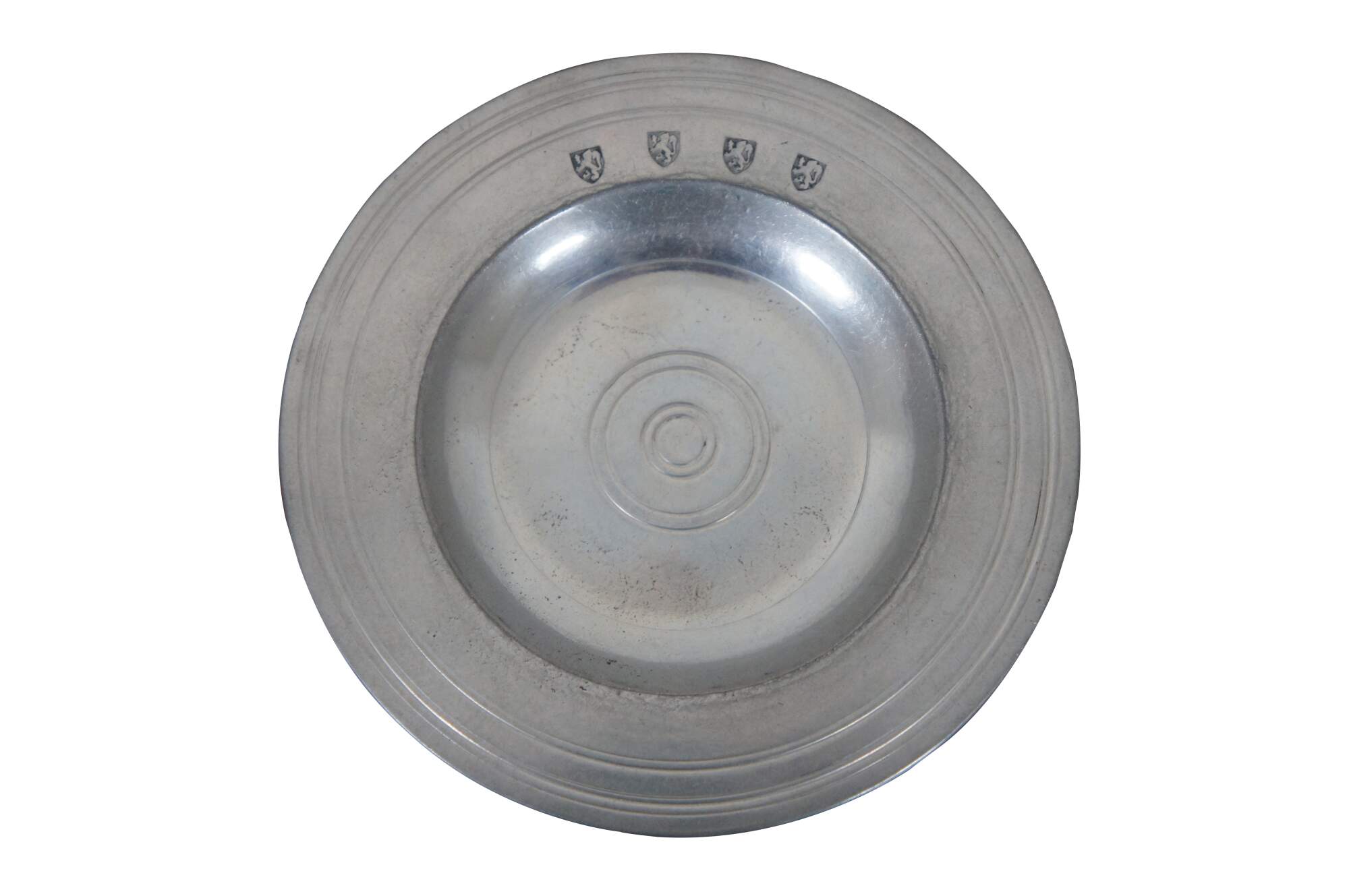
Shipping:
Free Shipping Included
Delivery:
Estimated 2-15 Business Days
Payments:
Credit Card, Check, Cash, PayPal, Apple Pay, Venmo
Returns:
30 Days 100% Money Back Guarantee, Buyer Pays Return Shipping
Description
Round pewter nut or bon bon dish, marked on the front edge with four heraldic lion Passants in shields and on the reverse with the name of the George Inn and London flanked by a pair of crowned X pewter quality marks.
“The George Inn, or The George, is a public house established in the medieval period on Borough High Street in Southwark, London, owned and leased by the National Trust. It is located about 250 metres (820 ft) from the south side of the River Thames near London Bridge and is the only surviving galleried London coaching inn.[1]
The pub was formerly known as the George and Dragon, named after the legend of Saint George and the Dragon. It is possible that it was used for Elizabethan theatrical productions (Inn-yard theatre), as other galleried inns were.[citation needed]
A pub has existed on the site since medieval times. But in 1677, it was rebuilt after a serious fire destroyed most of Southwark. The medieval pub was situated next door to an inn where Chaucer set The Canterbury Tales.[2]
Later, the Great Northern Railway used the George as a depot and pulled down two of its fronts to build warehousing. Now just the south face remains.[citation needed]
Charles Dickens visited The George, and referred to it in both Little Dorrit and Our Mutual Friend.
The building is partly timber framed.[3] The ground floor is divided into a number of connected bars. The Parliament Bar used to be a waiting room for passengers on coaches. The Middle Bar was the Coffee Room, which was frequented by Charles Dickens. The bedrooms, now a restaurant, were upstairs in the galleried part of the building.[citation needed]
It is the only surviving galleried coaching inn in London. The White Hart was immediately to the north but was demolished in the nineteenth century. Immediately to the south was The Tabard (which was described in Chaucer's The Canterbury Tales); it too was demolished in the nineteenth century.
The building is listed Grade I on the National Heritage List for England, and is listed in the Campaign for Real Ale's National Inventory of Historic Pub Interiors.”
Condition
Good Overall – Some slight pitting/scrapes
Dimensions
4.625” x 0.25” (Diameter x Height)
You May Also Like